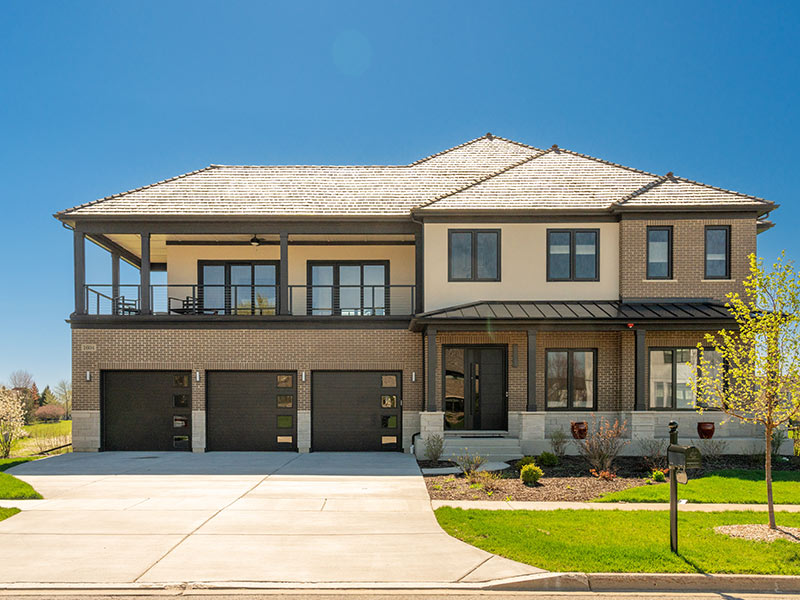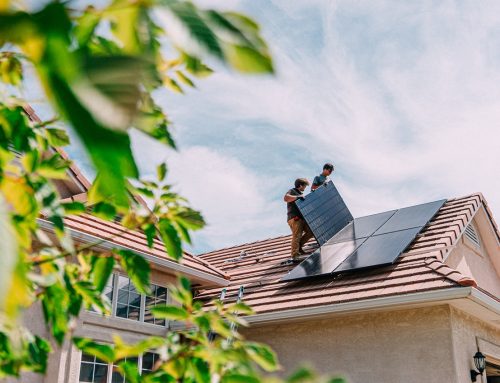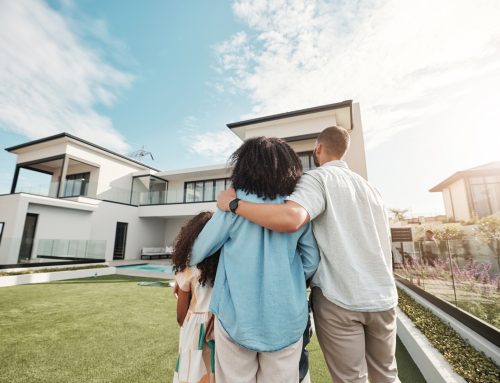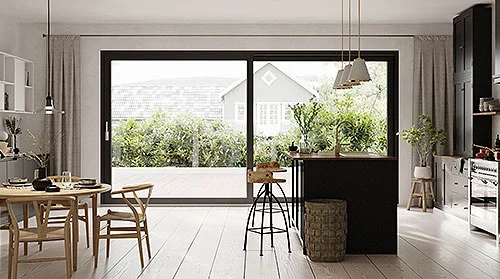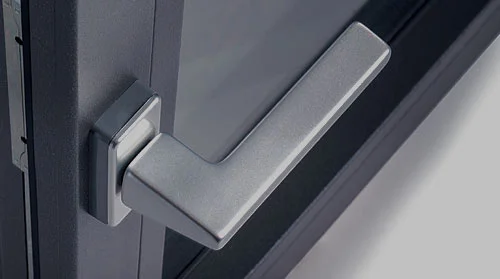Tilt and Turn windows have evolved from a European novelty to a premium option in American homes, offering unique 2-in-1 functionality that standard double-hung or casement windows don’t provide. At OKNOPLAST, the most common question we hear during events is, “Aren’t they expensive?”
In this article, we break down what drives the price tag for Tilt and Turn Windows, how they compare to double-hung and casement alternatives, and whether their energy efficiency, durability, and functionality deliver enough long-term value to justify the investment. Drawing on our manufacturing expertise, we’ll help you determine if tilt and turn windows are the right choice for your home and budget.
What affects the cost of Tilt and Turn Windows?
Material choice
The frame material significantly impacts both price and performance. Most homeowners choose between:
- uPVC: These models cost less than aluminum options. uPVC tilt and turn windows offer excellent insulation and durability with a decades-long lifespan. They represent the most cost-effective entry point into premium tilt and turn functionality. Great examples are PAVA and PIXEL lines.
- Aluminum: These frames provide unmatched structural strength. They can hold large and heavy packages of triple-pane glass giving you an amazing view to the outside of your home. Although the glass panes can be huge in size, the frames themselves are slim and elegant. That is the strength and rigidity of aluminum frames. Our floor-to-ceiling MIRU EVO windows operate flawlessly despite their impressive size.
Before we talk about glazing options and how they affect pricing, take a look what our experts have to say about different frame materials:
Glazing options
The glass package makes a substantial difference in both performance and price:
| Glazing Type | Performance Benefit |
|---|---|
| Double-glazed (standard) | Good insulation (typical for moderate climates) |
| Triple-glazed | Superior insulation (ideal for extreme temperatures) |
| Low-E coating | Blocks UV rays and improves energy efficiency |
| Argon/Krypton gas fill | Enhanced thermal performance |
Triple glazing is worth considering in regions with extreme temperatures, while double glazing with Low-E coating provides excellent value in moderate climates.
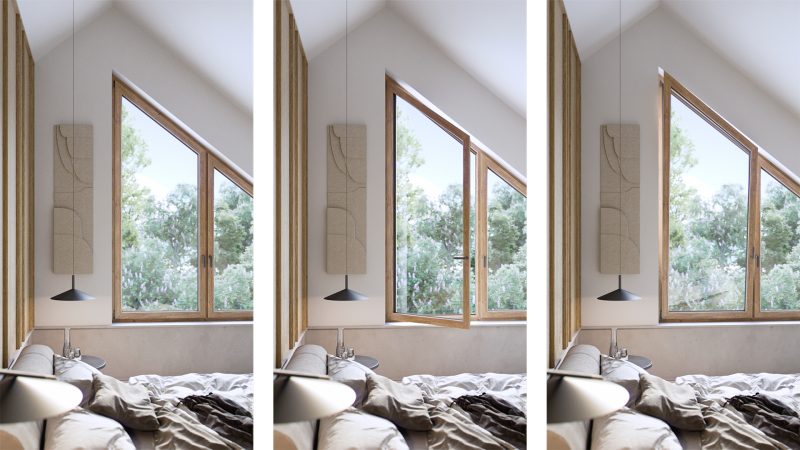
Customization features
Standard white uPVC windows cost the least, while custom colors from the RAL palette add to the cost. DECORAL wood-grain finishes are particularly popular in traditional homes and represent a premium option. We offer a wide range of finishes and veneers that can beautifully mimic natural materials like Winchester, Golden Oak, Walnut, as well as brushed aluminum and other metallic effects.
This versatility allows our windows to adapt to any architectural style, from ultra-modern contemporary designs to classic traditional homes. While multi-point locking systems come standard, premium handles like our PIXEL or HOPPE SECUFORTE designs represent an added investment.
Each customization choice allows homeowners to tailor their windows to specific aesthetic and functional needs.

Energy efficiency & certifications
Higher performance standards offer long-term benefits. That’s why our PAVA and MIRU EVO lines, are increasingly popular among homeowners in regions most affected by harsh weather conditions.
According to our engineers, two key elements make a significant difference:
- Passive House Certification – Windows that meet stringent Passive House standards are more expensive than standard models, but they significantly reduce heating and cooling costs by maximizing thermal efficiency.
- Hurricane Resistance – HVHZ-rated windows (such as OKNOPLAST models rated DP-90) are a must-have in coastal areas, providing essential protection against extreme weather conditions.
How do Tilt and Turn Windows compare to standard windows on the market?
Price comparison with double-hung and casement windows
Here’s how the window types compare:
| Window Type | Notable Features |
|---|---|
| Double-Hung | Vertical sliding sashes, limited sealing, most budget-friendly option |
| Casement | Side-hinged, good sealing but single function, mid-range pricing |
| Tilt and Turn | Dual-function, multi-point locking, superior sealing, premium category |
Long-term value: are Tilt and Turn windows Worth It?
Tilt and Turn Windows offer several long-term financial benefits:
- Energy Savings: Properly installed tilt and turn windows typically reduce heating and cooling costs significantly.
- Maintenance Costs: Traditional double-hung windows often need weather stripping replacement every 5-7 years, while tilt and turn windows maintain their seal much longer. Many 15-year-old tilt and turn windows still seal perfectly.
- Durability: The robust hardware typically lasts decades without replacement, compared to 10-15 years for standard window hardware.
- Property Value: While difficult to quantify precisely, homes renovated with tilt and turn windows typically highlight this feature in listings and attract buyers looking for European-style quality.
![]()
Are there ways to reduce the cost of Tilt and Turn windows?
- Federal Tax Credits: Energy-efficient windows that meet specific criteria can qualify for tax credits (with certain limitations).
- State Programs: Many states offer additional rebates for energy-efficient window replacements.
- Utility Company Incentives: Local utility providers often have their own rebate programs for energy-efficient improvements.
We recommend checking the Database of State Incentives for Renewables & Efficiency (DSIRE) website for current offerings in your area.
Final thoughts: should you invest in good Tilt and Turn windows?
At OKNOPLAST, we can confidently say that Tilt and Turn Windows are indeed more expensive than standard American windows—but they’re also superior in almost every measurable way.
For homeowners planning to stay in their homes for at least 5-10 years, the initial investment typically pays for itself through energy savings, reduced maintenance, and enhanced comfort.
If you’re building a new home or replacing old windows and value quality, efficiency, security, and versatility, tilt and turn windows are worth serious consideration.
For budget-conscious homeowners, starting with uPVC models like our PIXEL or PAVA provides much of the benefit at a more accessible price point.
Remember that the true cost of windows isn’t just the purchase price—it’s the total cost of ownership over decades. By that measure, tilt and turn windows often represent the better value.
Continue Reading
Products.
